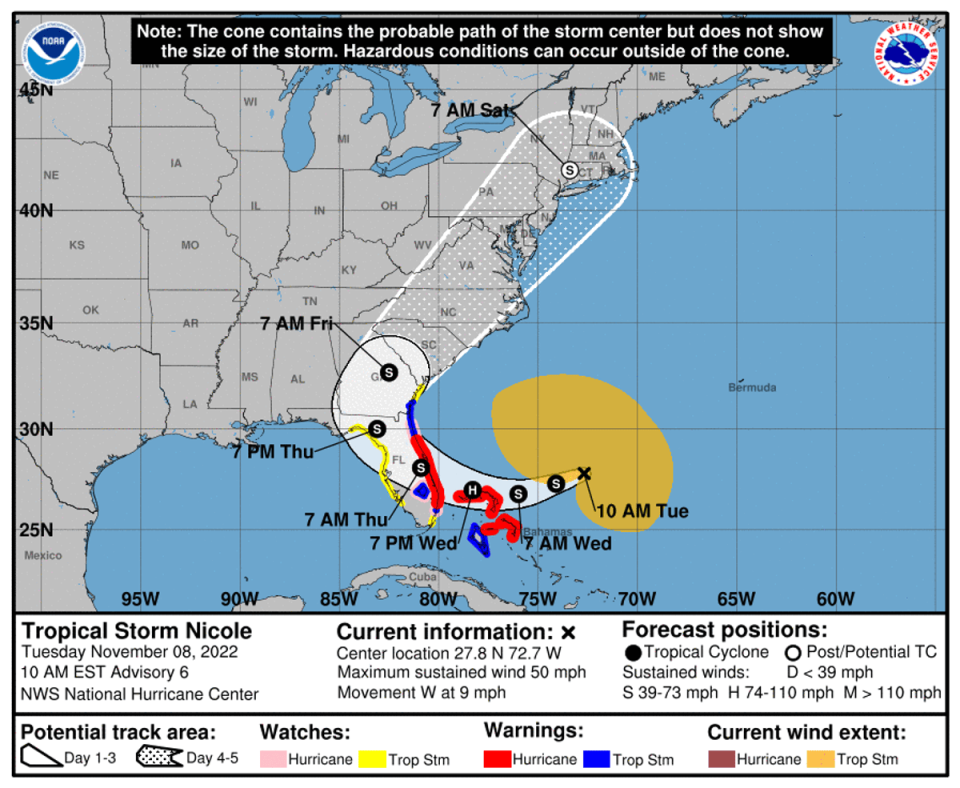Tropical Storm Nicole expected to become hurricane on way to Florida
Nicole officially became a tropical storm on Tuesday, with the storm forecast to make landfall in Florida as a hurricane on Wednesday.
A hurricane warning has been issued for parts of the northern Bahamas and much of Florida’s Atlantic coast. Other parts of Florida and the Bahamas are under a tropical storm warning.
By late Wednesday, Nicole is expected to strengthen into a Category 1 hurricane. While it isn’t going to make direct landfall in southwest Florida, parts of the state that are still picking up the pieces from Hurricane Ian’s impact just weeks ago are likely to see heavy rain and winds in the coming days.
On the southeast coast of the state, which largely escaped the worst of Ian’s wrath, the National Weather Service (NWS) is warning that areas in the storm’s path could experience “considerable roof damage” and “large areas with power and communications outages”, as well as rapid-onset flooding in low-lying areas.
While some light rain is expected to begin on Tuesday, the brunt of the storm’s impact will come on Wednesday and Thursday. Nicole is projected to make landfall somewhere on Florida’s Atlantic Coast overnight between Wednesday and Thursday.

The National Hurricane Center (NHC) is projecting storm surges up to five feet (1.5 metres) in some locations along the coast, with up to seven inches (18 centimetres) of rain in some spots.
On Monday, Miami-Dade County Mayor urged residents to stay vigilant to the forecast and have storm supplies at hand and ready.
In addition to the direct impact on the Miami area, Nicole is forecast to bring severe weather to most of the rest of Florida, as well as other parts of the southern US. Most of Florida’s Gulf Coast is under a tropical storm watch, as is part of the Georgia and South Carolina coast.
By Thursday, the storm is forecast to turn to the northeast and head along the US east coast up toward New York.
If it does strengthen into a hurricane, Nicole will be one of the rare November hurricanes. While hurricane season in the Atlantic lasts from June until the end of the month, it usually reaches peak intensity in early September.
The average year features less than one named storm that forms in the month of November, according to the National Oceanic and Atmospheric Administration (NOAA).
While NOAA had predicted an “above-normal” hurricane season, this year has been a bit quieter than expected.
But the two major hurricanes that did form in the Atlantic were especially destructive. In September, Hurricane Fiona slammed into Puerto Rico, leaving much of the island without power for weeks and bringing back painful memories of Hurricane Maria, which decimated the island in 2017.
Later that month, Hurricane Ian smacked into southwest Florida as a nearly Category 5 storm, leaving more than 100 people dead and communities around Fort Myers and Naples facing months of years of recovery.
This is a breaking story, more to follow

